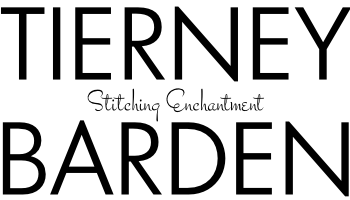For many of us, the new year means a chance to wipe the slate clean and start fresh, dream big. One of my absolute favorite things to do this time of year is assess both my business and my personal goals. I admit it doesn't sound very romantic, but it does go a long way to being prepared, and therefore, feeling empowered throughout the entire year. Simply stated: fail to plan, plan to fail.
Several years in sales helped me refine how I lay the groundwork for a successful year, so I thought I'd share my process with you. We all have our own preferred planning system, but whether you have a business or are setting personal goals, perhaps you'll find a few tips to incorporate into your planning routine to get even more out of 2018! Be forewarned, I'm a list person, so this is generally how it goes:
Probably the single most important step: schedule and commit to a time to settle in and do the work. I treat it as a ritual of sorts by setting a peaceful, calm mood and clearing away distractions. Being alone with no TV or music is a great start. I light candles, wear soft, comfy clothes, brew a fresh cup of coffee, put my phone on silence and finally, get a fresh tablet of paper and a smooth flowing pen. For this exercise, I still prefer to write by hand because it forces me to slow down and to be mindful, but using your tablet might suit you best. Using what works for you is important.
- First, on a blank piece of paper list all of the goals and wishes that come to mind for the new year. I don't edit at this stage - I simply list everything, no matter how outrageous! I take my time with this step, after all, it's defining how I'll spend my year.
- Once I've written every dream and every goal I can imagine for myself, I mark an A, B, or C alongside each goal as follows (catagorize as you see fit for your own list):
- A = top priority or an existing commitment
- B = keep plugging away because achieving this would be excellent
- C = this is nice, but it's really ok if it doesn't happen this year
- To really embed these new priorities in my mind, and to make the next step more efficient, I write my A, B, C goals as three separate lists. My A list is always short, and becomes the backbone of my year.
- Here's the last step: The Master Calendar. I have a separate paper with 12 roomy, blank boxes, each labeled with a month. If you want something more spruced up, plenty of free calendar templates are available online. Items from the A list are written in each appropriate month's block. For example, you might need to work on an event for six months leading up to the event, so break down the steps into manageable chunks and assign each to an appropriate month. Next, items from the B list are dropped in throughout the year according to when they make sense to be worked on. Repeat for the C list. Something important to note: if any item on a list doesn't excite me or isn't important to the growth of my business, it simply doesn't go on the calendar. And that's OK. This exercise is about getting clear on your own priorities and realistically mapping out time to accomplish your goals.
By now, I can really see how my entire year is shaping up. I stop here, for a while, and ask if this line up truly seems achievable, or am I better served letting some thing(s) go. The older I get, the more I appreciate quality over quantity. I also remind myself that things usually take longer than expected. At this point, I'm looking at my whole year on one page where I can regularly check in throughout the year and keep myself on track. I can also modify the calendar as the year unfolds and be reminded of small things that, despite best intentions, might have otherwise fallen through the cracks.
This approach to goal setting and planning can be used in all sorts of manners: maybe you're building your handmade capsule wardrobe, or want to take your blogging to new heights. This is the place to commit to family outings, campfires and stargazing. Assign blocks of time devoted to making the quilts you really want to make. Schedule your workouts. Make dates to get out and have fun. One thing we can all count on is that the year will pass, so let's be sure to make the most of each month, each week, each day.
A one-page calendar isn't meant to capture project details, inspiring photos or important contacts, so those parts of the process are best left to a second wave of planning: inspiration boards, journals, sketchbooks and planners. Personally, the list maker in me depends on a Franklin Planner for infusing the big goals with the details of daily life. For drawing, I'm transitioning from purely using handmade sketchbooks to increasingly using my ipad and apple pencil. With these additional methods to plan and track progress, what's the point of the goal planning calendar? By keeping my entire year in front of me, I always see the big picture, as well as the sum of its parts. And to make sure I don't lose sight of where I'm going, it hangs from a clipboard just inside my studio door.
This exercise is meant to set myself up for an awesome year, one that I can look back on and feel satisfied, which is why I only include goals that are meaningful, purposeful and positive. I hope this guide is helpful as you plan your beautiful year ahead. Feel free to drop me a line with any questions.



